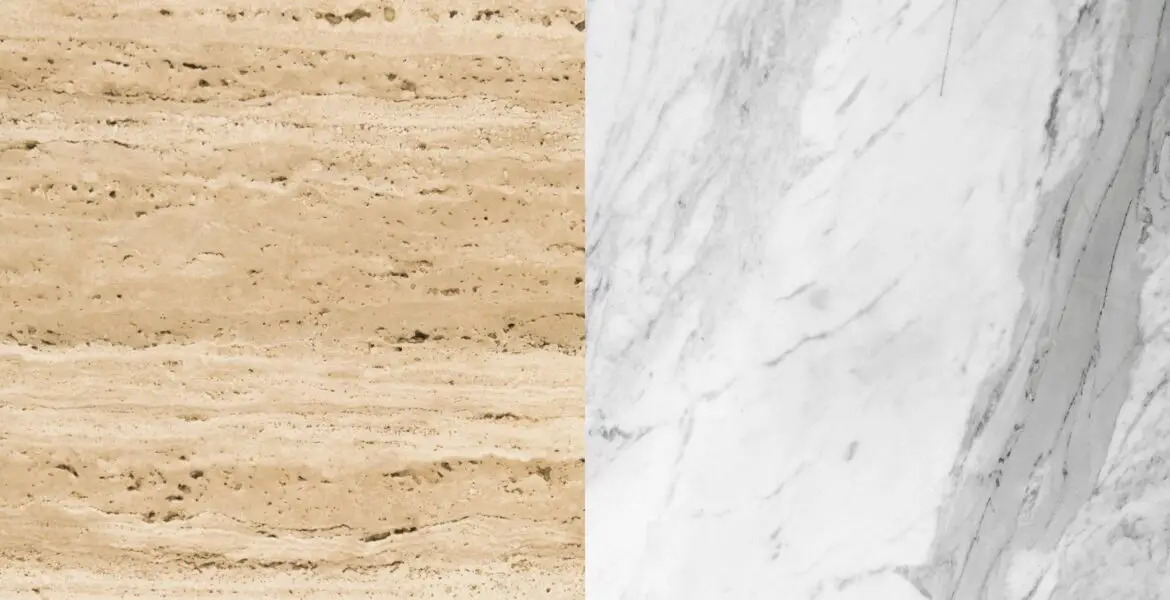Travertine vs marble – are they the same thing? Read on to discover how they differ (yes, they’re completely different stones!) and which is the better option for your home.
Is it just me or was travertine one of the biggest interior design trends in our decade?
Since this material has gotten so popular recently, I’ve noticed a lot of people getting confused between travertine vs marble.
At first glance, travertine looks pretty similar to marble.
Both look like smooth, polished, and elegant stones for the home.
However, after much research, I’ve discovered that travertine and marble are NOT the same.
They are both natural stones and come from the limestone family, but their similarities end there.
In this post, I will share with you everything I’ve discovered about travertine vs marble including their major differences. Read on to find out more about:
- What is travertine?
- What is marble?
- Differences between traventine vs marble
- Pros and cons of travertine
- Best usage of travertine
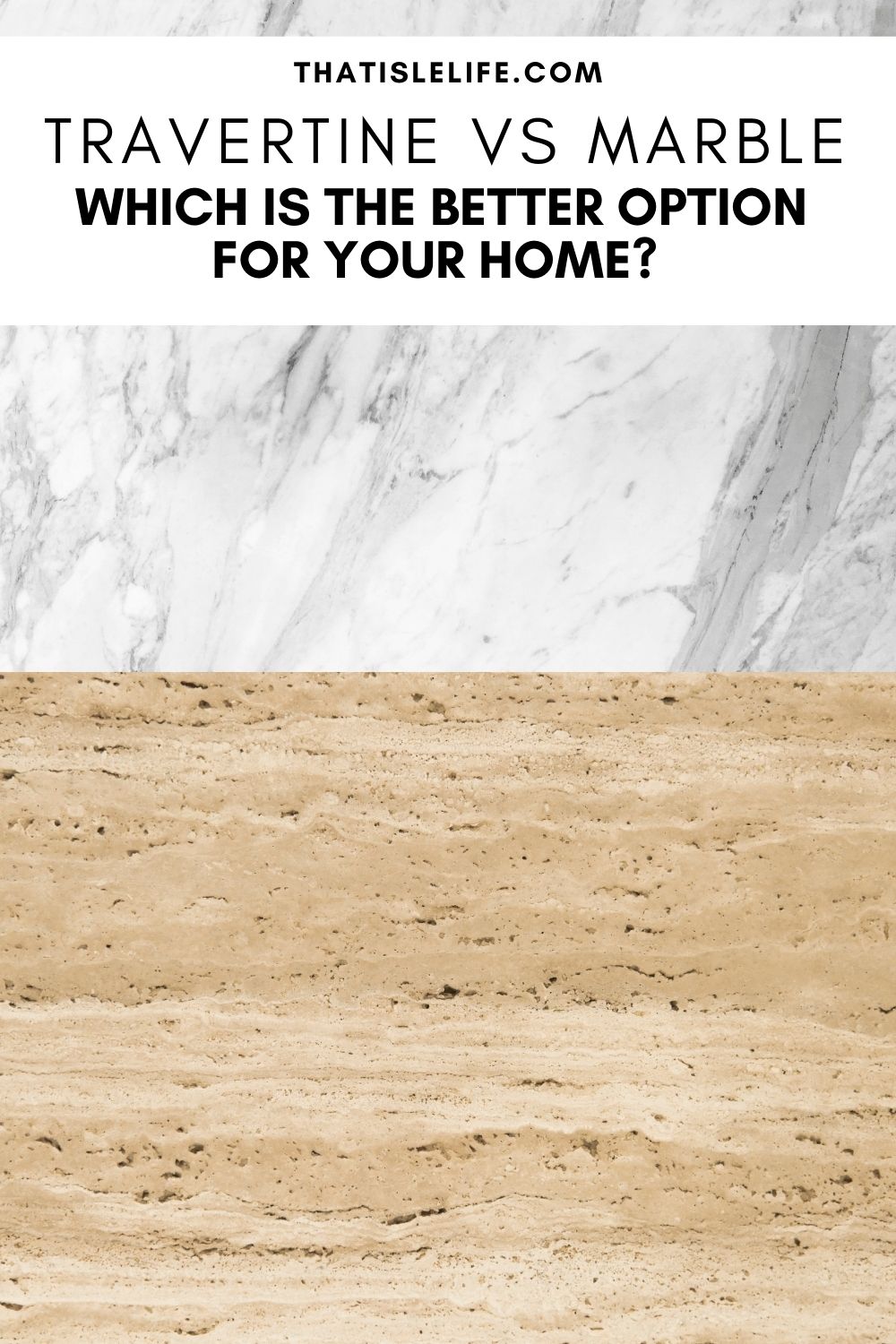
Table of Contents
Related: Terrazzo vs Marble – Which is the better option for your home?
What is travertine?
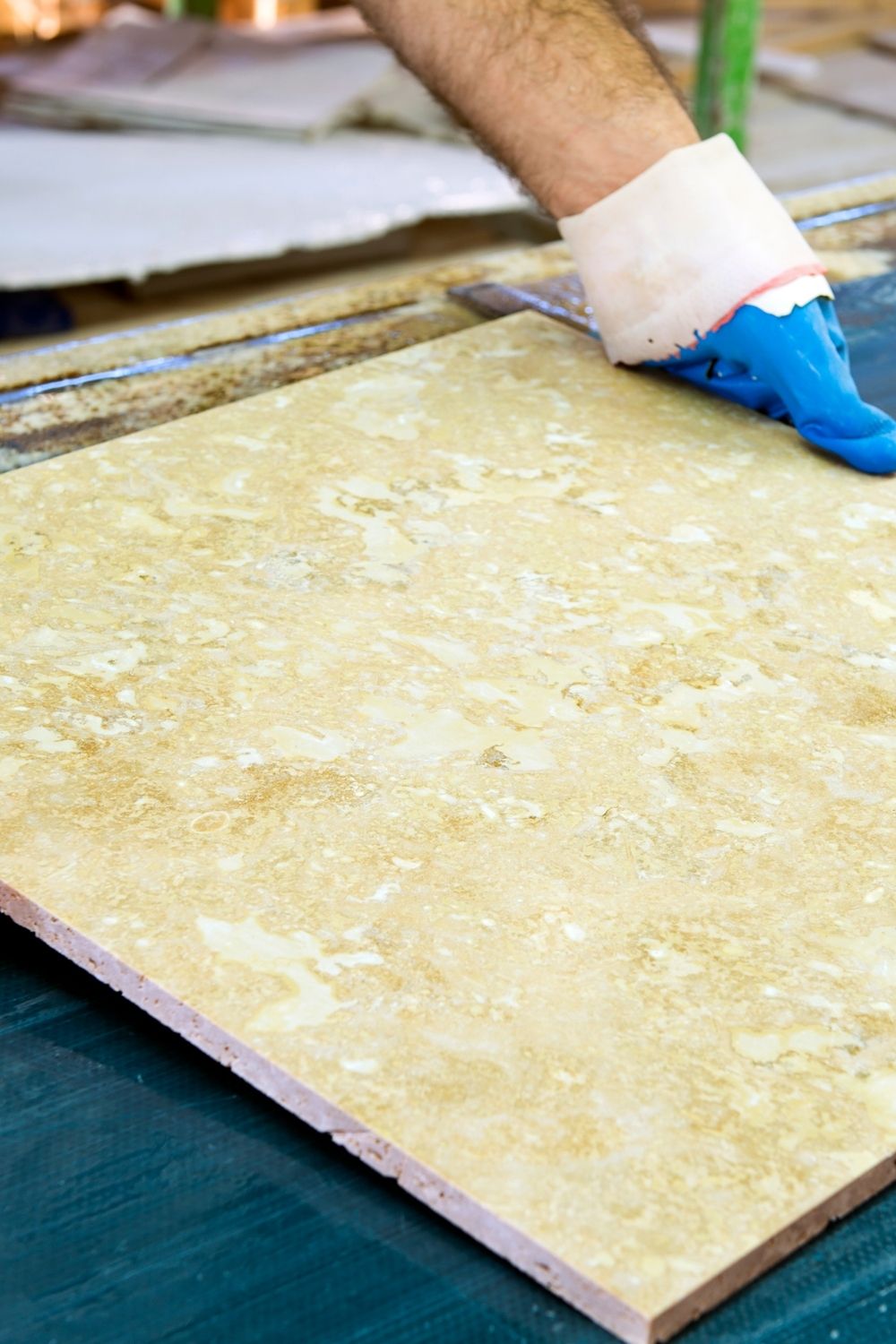
According to Britannica, travertine is a type of limestone that is formed by the evaporation of river and hot spring waters.
As a result, it is a dense rock composed of calcium carbonate.
Travertine can be polished to a smooth finish, honed into a matte finish, and brushed or tumbled into a textured surface.
It has a highly porous appearance and comes in mostly neutral colors like cream and light beige.
Depending on where travertine is mined, it can also come in warmer hues like yellow, brown, orange, and red.
Travertine is mostly used as a building material in both internal and external designs.
What is marble?
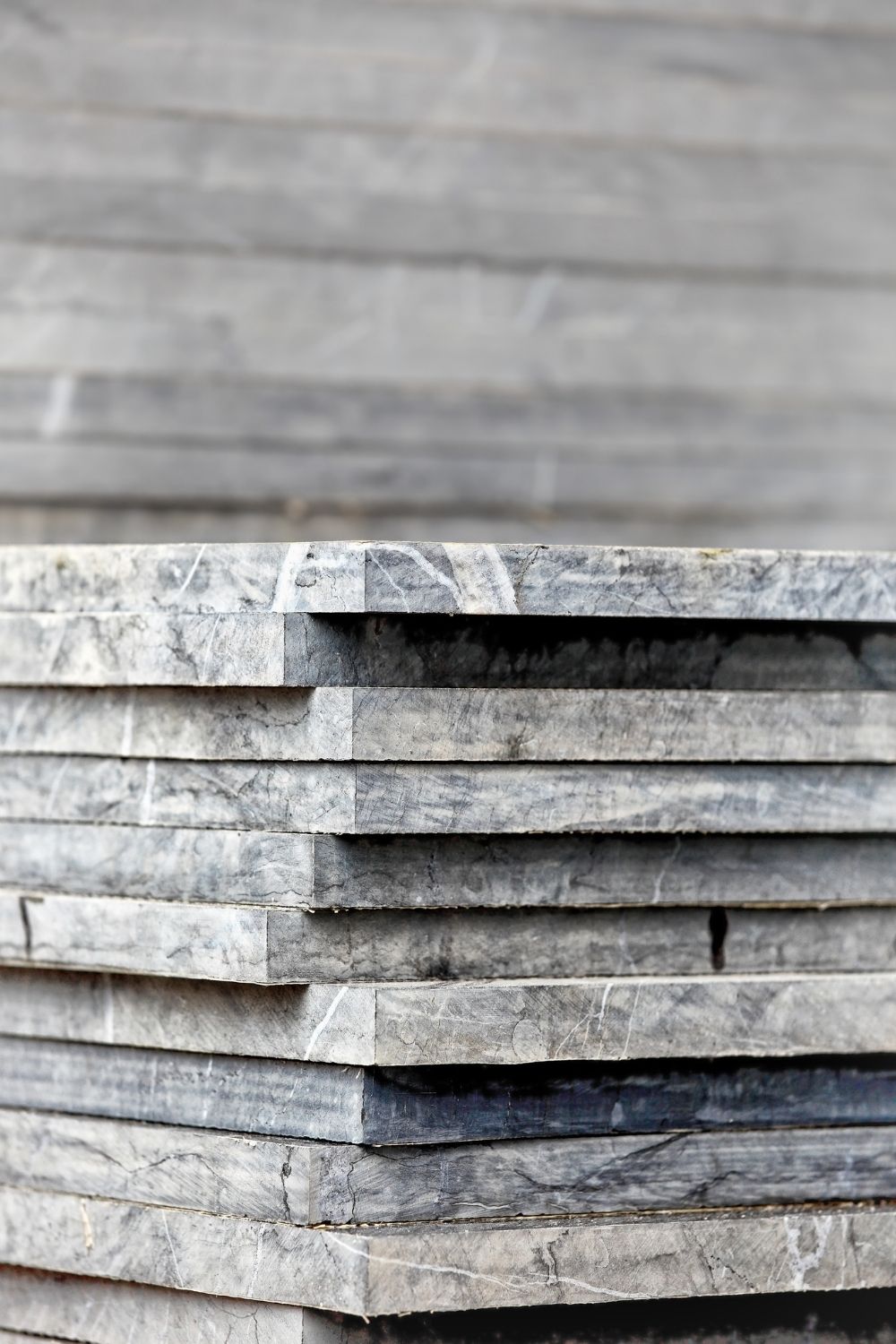
Marble is a natural stone; however, it is produced through the crystallization of limestone.
The final result is a stone that has different veins on each piece, making them very unique.
Marble also reflects light beautifully and therefore has a beautiful shine or gleam to it.
Unlike travertine, marble is mostly used indoors.
Related: Dolomite vs Marble – Which Natural Stone Is Better For Your Home?
Differences between travertine vs marble
Appearance
Although they look similar, travertine has holes found within the stone that is caused by carbon dioxide evasion.
This is a unique characteristic of travertine, which gives it a textured and organic look.
Although marble and travertine usually come in single solid colors, marble usually has streaks of darker colors or “veins” running through it.
Marble also comes in a variety of colors like white, green, black, brown, and gold.
On the other hand, travertine only comes in warm colors like beige, brown, taupe, cream, and gold.
They do not have veins, but there are soft color variations between tiles.
Besides that, since both are natural stones, there are no two slabs that look alike.
Durability
Generally, both marble and travertine are durable enough for everyday use.
They will not rust, rot, burn, or change color.
But, both materials are prone to scratching, etching, and staining if they are not sealed consistently.
However, non-polished travertine has a naturally rough and porous surface.
This makes the material suitable for wet areas like a pool deck because it helps to prevent slips and falls.
Travertine is also frost resistant, unlike marble which may crack under freezing conditions.
Cost
One thing’s for sure – natural stones are typically more expensive than engineered stones.
The price of natural stone depends on several factors like the quality, finish, and processing.
Nevertheless, when it comes to travertine vs marble, travertine is usually half the price of marble due to a number of reasons.
For instance, natural travertine is easier to cut and process, hence the lower cost.
Related: Quartz vs Marble – Which is the better option for my kitchen?
Pros of travertine
Cheaper
Considering that it’s a cheaper material yet has almost all the same qualities of marble, travertine is truly a great investment!
Non-slip
Unpolished travertine has a rougher surface, which gives it a non-slip trait that marble doesn’t have.
This makes travertine a safe material for wet areas like bathrooms and pool decks.
Frost resistant
Like the look of marble but experience the world’s worst winters?
Try travertine instead. Travertine pavers can not only withstand scorching summers, they can also endure harsh freezing climates as well!
Beautiful
Travertine is beautiful in its raw or polished state. I love how elegant they look when installed on walls and floors.
Related: Quartzite vs Marble: Which Natural Stone Is Better For My Home?
Cons of travertine
Naturally porous
As a naturally porous material, travertine is prone to etching, staining, and scratching.
If you’re not someone who can bear the sight of these imperfections, travertine is not for you.
Requires regular maintenance
Just like marble, travertine requires regular maintenance.
It is necessary to seal travertine properly after installation.
Following that, it is important to re-seal travertine at least once a year to avoid stains, scratches, and etch marks.
Best usage of travertine
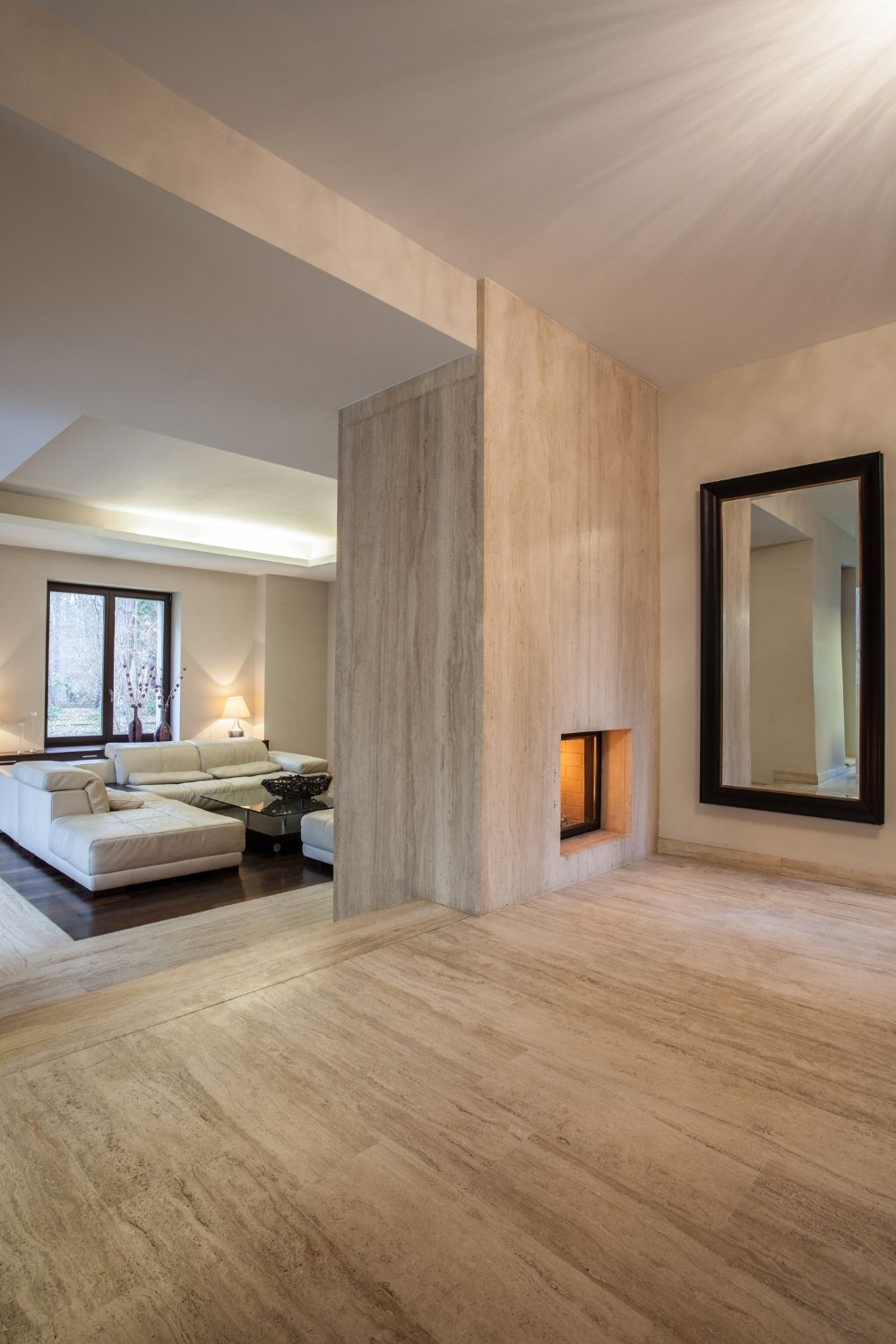
Now that you know everything about travertine, let’s get down to business.
Which material is better for your home?
You can use travertine almost anywhere in your home!
However, avoid using it as a kitchen countertop as it is a porous material.
Consider using travertine in your:
- Bathroom / Shower
- Pool area
- Walls
- Flooring
- Stairs
- Fireplace cladding
Tip: On a budget? Try incorporate travertine furniture in your home instead. Check out this super-affordable coffee table hack using travertine pavers.
I hope this post has taught you everything about travertine vs marble!
Whichever you choose, always treat both materials with care and respect, so they will last for a long time.

